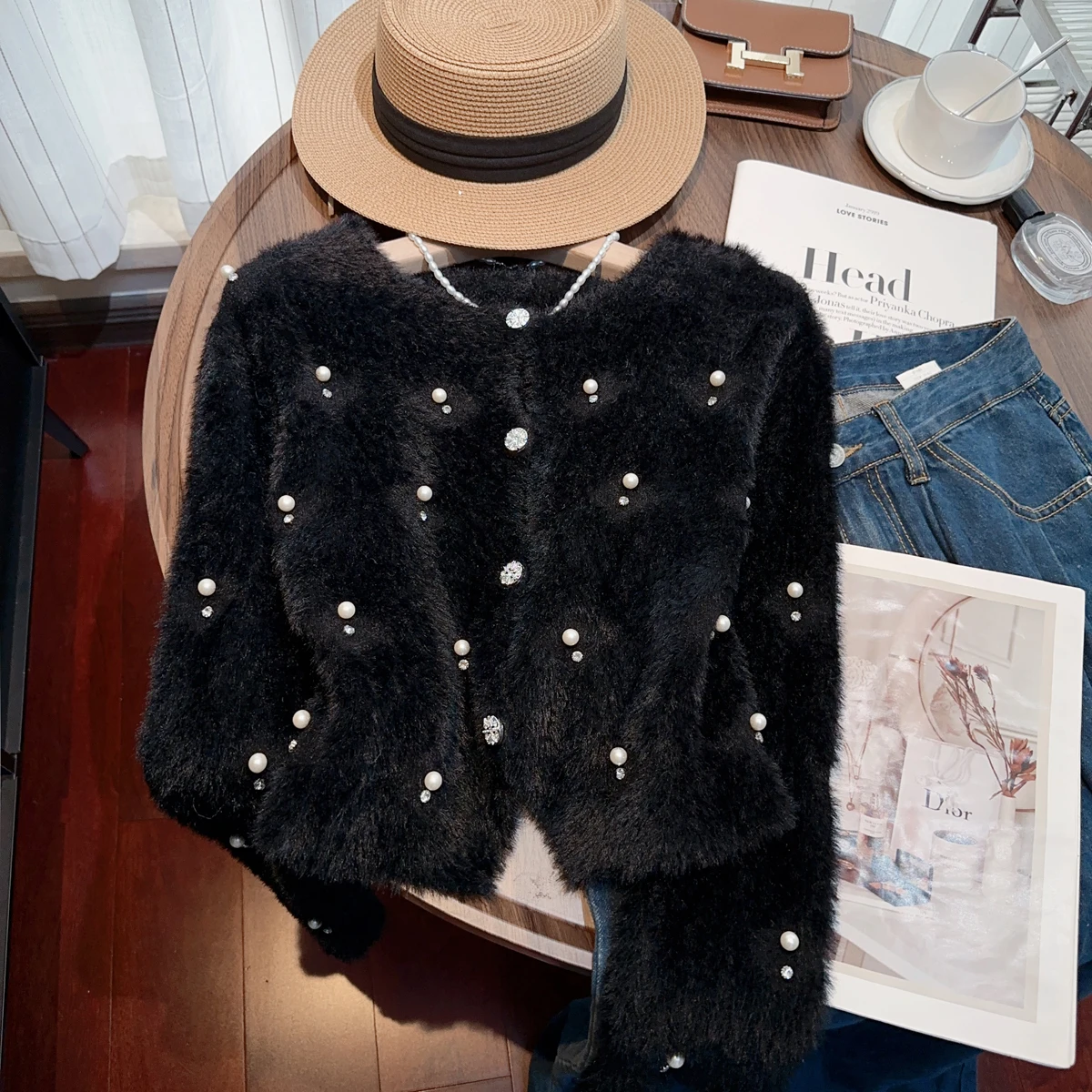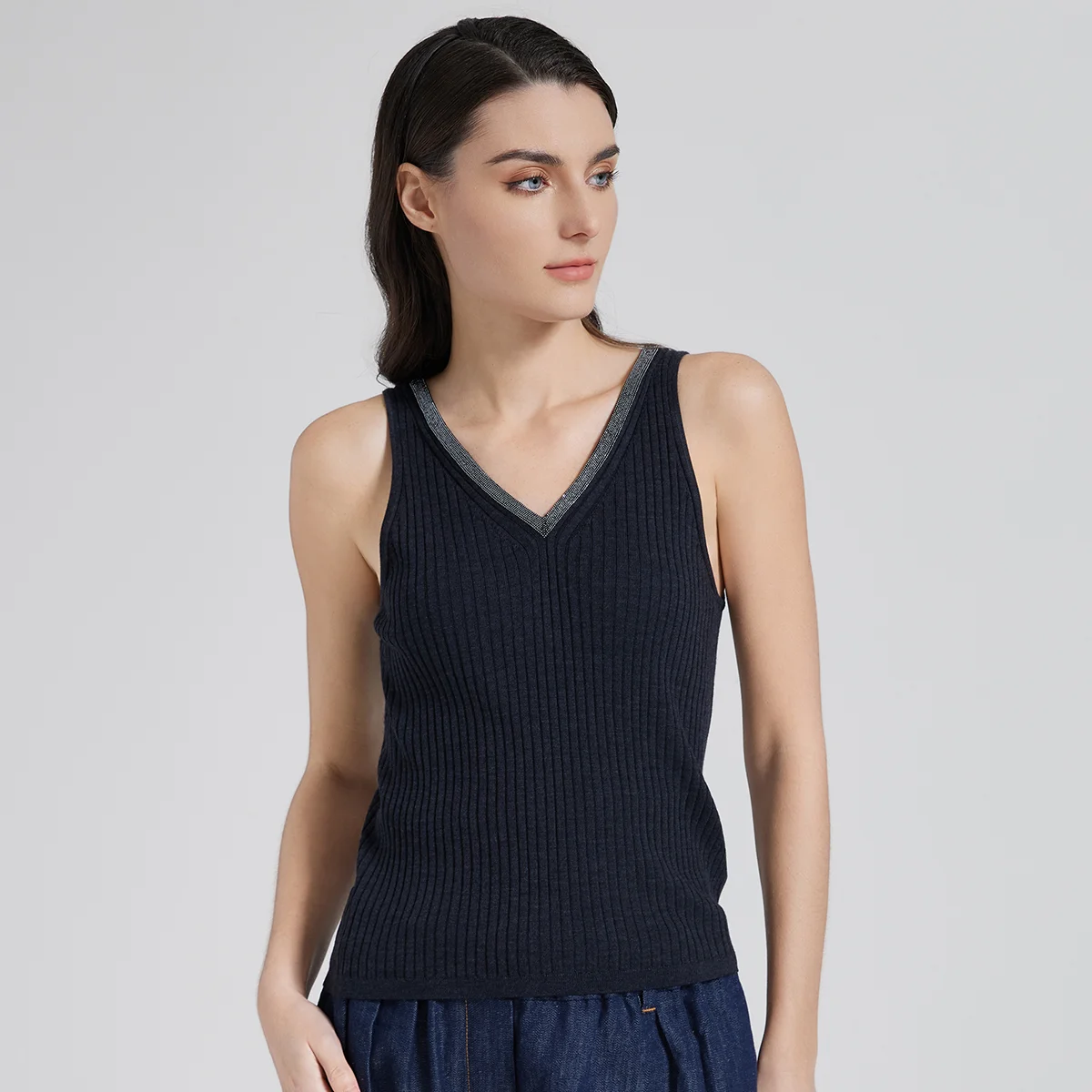Introduction: Why Cashmere Excels Beyond Winter
Cashmere isn’t just for frigid winter days. This luxurious fiber offers exceptional versatility that extends far beyond the coldest months of the year, making it a perfect companion for those in-between temperature days. While most people relegate their cashmere pieces to winter wardrobes, those in the know understand that this premium fiber actually thrives across multiple seasons.
What makes cashmere truly remarkable is its natural ability to adapt to your body’s needs. During mild weather days—those pleasant 60-75°F (15-24°C) days of spring and fall—cashmere provides just enough warmth without overheating. This adaptability stems from cashmere’s unique origins in the harsh climates of mountainous regions, where goats developed undercoats that could handle dramatic temperature swings.
The secret lies in cashmere’s remarkable natural properties that few other materials can match. Unlike synthetic fabrics or even regular wool, cashmere offers a perfect balance of insulation and breathability that makes it ideal for cashmere transitional weather scenarios. This natural thermoregulation is why cashmere has been prized across cultures and climates for centuries.
But what exactly gives cashmere this remarkable ability to perform so well in mild temperatures? The answer lies in the science behind the fiber.
The Science of Cashmere’s Adaptability to Mild Temperatures
The Unique Fiber Structure of Premium Cashmere
At the microscopic level, cashmere’s performance stems from its extraordinary structure. Premium cashmere fibers feature a unique construction that creates natural climate control for your body. Unlike regular wool, cashmere fibers have:
- A semi-hollow core that traps air for insulation while allowing breathability
- Ultra-fine diameters (under 16 microns compared to 18-24 microns for regular wool)
- Longer fiber lengths (over 36mm) that create smoother, more durable fabric
- Fewer and smoother scales on the exterior, creating a softer feel against skin
- Natural crimp that creates millions of tiny air pockets without adding bulk
These structural characteristics explain why high-quality cashmere feels substantially different from other wools. The diameter of the fiber is particularly important—Estate Cloth uses only fibers under 16 microns thick, which is significantly finer than human hair (around 70-100 microns). This fineness allows the fabric to drape beautifully while maintaining impressive temperature regulation.
Understanding different cashmere yarn weights from lace to super bulky helps in selecting the perfect piece for mild weather. The finer the yarn, the more suitable it becomes for warmer conditions, as it enhances the natural thermoregulating properties of the fiber.
Thermoregulation: Nature’s Built-in Climate Control
Cashmere’s ability to regulate temperature comes from evolutionary adaptation. Cashmere goats native to high-altitude regions experience extreme temperature variations—freezing nights followed by warm days. Their undercoat developed to provide protection across this temperature spectrum.
This natural adaptation translates directly into cashmere’s performance as a textile. The fiber structure creates a microclimate between the fabric and your skin, moderating temperature in both directions. When the air turns slightly cool, the fibers trap warmth. When temperatures rise, the same structure releases excess heat.
This is why cashmere is warmer than wool by weight but can still perform beautifully in milder conditions. The key difference lies in how cashmere manages this warmth. Unlike synthetic insulators that simply trap heat regardless of conditions, cashmere’s natural fibers respond dynamically to both your body and the environment.
Breathability: The Key to Mild Weather Comfort
Breathability—a fabric’s ability to allow air and moisture vapor to pass through—is essential for comfort in mild weather. When temperatures fluctuate throughout the day, your body’s needs change accordingly. Cashmere excels here by allowing continuous air exchange while still providing protection.
Compared to other premium fibers, cashmere offers superior air permeability. Silk, while luxurious, doesn’t breathe as effectively. Cotton breathes well but lacks temperature regulation. Synthetic fibers often trap moisture against the skin. Cashmere achieves an ideal balance, especially when constructed in lighter weights appropriate for mild temperatures.
This exceptional breathability becomes particularly valuable during those spring and fall days when the temperature might swing 20 degrees between morning and afternoon. Your cashmere cardigan that kept you comfortable during a chilly morning commute won’t leave you overheated during a sunny lunch break.
Moisture Management: Staying Dry When Temperatures Rise
Beyond breathability, cashmere possesses remarkable moisture-wicking properties. The fiber can absorb approximately 30% of its weight in moisture without feeling damp to the touch—far superior to cotton or synthetics. This hygroscopic quality pulls perspiration away from your skin, allowing it to evaporate from the outer surface of the garment.
This moisture management becomes crucial during mild weather when slight temperature changes might cause your body to adjust its temperature regulation. The difference between feeling perfectly comfortable and slightly clammy often comes down to how well your clothing manages moisture—an area where quality cashmere truly excels.
As moisture evaporates from cashmere, it creates a slight cooling effect—another way the fiber naturally regulates temperature in changing conditions. This property makes cashmere particularly valuable during seasonal transitions when weather can be unpredictable.
Selecting the Perfect Cashmere for Mild Weather Conditions
Understanding Ply Count: The Foundation of Weight
When shopping for mild weather cashmere, understanding ply count becomes essential. The term “ply” refers to how many strands of yarn are twisted together to create the final yarn used in knitting or weaving the garment. This seemingly technical detail significantly impacts how a cashmere piece performs in different temperatures.
For mild weather, consider these options:
Single-ply cashmere: The lightest option, offering excellent breathability and drape. Perfect for warmer days (65-75°F/18-24°C) or indoor environments. Creates fluid, lightweight garments ideal for layering.
Two-ply cashmere: The versatile middle ground, providing a balance of substance and breathability. Suitable for typical mild weather conditions (55-70°F/13-21°C). Offers more structure while maintaining excellent drape.
Three-ply and higher: Generally too warm for mild weather, but useful for cooler transitional days or as outer layers during temperature drops.
Understanding the perfect yarn weight for cashmere sweaters helps you make informed choices based on when and where you’ll be wearing the piece. For true mild weather versatility, two-ply cashmere often provides the best balance—substantial enough to provide some warmth but not so heavy that it becomes uncomfortable as temperatures rise.
Weave and Gauge: Finding the Ideal Balance
Beyond ply count, the weave pattern and gauge (knitting density) dramatically influence how cashmere performs in mild weather. These factors determine how much air circulates through the fabric and how much insulation it provides.
For mild weather cashmere, look for:
- Open weaves: Looser knit structures allow more air circulation, enhancing breathability.
- Fine gauge knits: Higher gauge numbers (12-gauge and above) indicate finer, lighter-weight fabrics.
- Jersey knits: Simple, lightweight constructions that drape well and provide minimal bulk.
- Ribbed constructions: Offer flexibility and can adapt to temperature changes through compression and expansion.
Avoid heavy cable knits, dense constructions, or very low gauge numbers (7 and below), as these create fabrics designed to trap maximum heat—ideal for winter but potentially overwhelming in mild conditions.

The perfect mild weather cashmere strikes a balance between being substantial enough to provide light warmth while remaining airy enough to prevent overheating. The weave structure should allow you to feel the characteristic softness of the cashmere against your skin while maintaining comfort as temperatures fluctuate.
Strategic Blending: Enhancing Cashmere’s Natural Properties
Cashmere blends combine the best properties of multiple fibers, often enhancing performance in mild weather conditions. While pure cashmere offers exceptional quality, thoughtfully created blends can provide specific benefits for transitional seasons.
Common beneficial cashmere blends include:
| Blend Material | Benefits | Ideal Blend Ratio | Best For |
|---|---|---|---|
| Silk | Enhanced drape, subtle sheen, cooling properties | 70% cashmere/30% silk | Elegant pieces for slightly warmer days |
| Cotton | Added structure, improved durability, enhanced wicking | 85% cashmere/15% cotton | Everyday casual wear with less delicacy |
| Linen | Superior breathability, textural interest, quick drying | 80% cashmere/20% linen | Hot-to-warm fluctuating temperatures |
| Merino | Improved elasticity, better recovery, enhanced durability | 70% cashmere/30% merino | Active lifestyle pieces requiring stretch |
Understanding lightweight cashmere essentials can help you determine whether a pure or blended option better suits your needs. For the most versatile mild weather pieces, silk-cashmere blends offer exceptional performance, combining cashmere’s temperature regulation with silk’s natural cooling properties.
When considering blends, maintain a cashmere percentage of at least 70% to preserve the primary benefits of the fiber. Lower percentages may compromise the luxurious feel and temperature-regulating properties that make cashmere special.
Identifying Premium Quality: The Long-Staple Advantage
The quality of cashmere significantly impacts its performance in mild weather. Premium cashmere with longer fiber lengths (called “staple”) creates garments that perform better across temperature ranges. These longer fibers:
- Create smoother, more even yarns with fewer fiber ends exposed
- Reduce pilling and surface abrasion
- Enhance durability through multiple seasons
- Improve drape and movement in lightweight constructions
- Maintain structure without excessive weight
When examining cashmere for mild weather wear, look for:
– A smooth, even surface without visible irregularities
– Minimal initial pilling or fuzzing
– A soft hand that doesn’t feel overly fuzzy (which can indicate shorter fibers)
– Natural luster without appearing shiny
– Resilience when gently stretched
High-quality cashmere commands a higher price, but the investment pays dividends in versatility and longevity—particularly important for pieces you’ll wear across multiple seasons.
Essential Cashmere Pieces for Mild Weather Wardrobes
Lightweight Cardigans: Versatile Layering Essentials
The lightweight cashmere cardigan stands as perhaps the most versatile mild weather piece you can own. An ideal transitional cardigan features a fine-gauge construction in a two-ply yarn, providing structure without excessive warmth. Open-front styles offer the most temperature flexibility, while button-front versions provide adjustable coverage as conditions change.
For maximum versatility, look for:
– Mid-hip length for versatile styling options
– Slightly relaxed fit to accommodate light layers underneath
– Simple design elements that translate across seasons
– Neutral colors that coordinate with multiple outfits
– Weights under 10 oz (280g) for optimal mild weather comfort
The beauty of a well-designed women’s cashmere cardigan is its ability to serve multiple functions—from morning cover-up to evening wrap, office layer to weekend essential. The right cardigan moves seamlessly between these roles, making it a cornerstone of a practical mild weather wardrobe.
Short-Sleeve and Three-Quarter Sleeve Options
Shorter sleeve lengths transform cashmere from winter-only to year-round luxury. Short-sleeve and three-quarter sleeve cashmere pieces bridge the gap between seasons, providing the softness and temperature regulation of cashmere without the full coverage of traditional long-sleeve designs.
These pieces excel in:
– Indoor-outdoor transition situations
– Layering under jackets or blazers without bulk
– Providing core warmth while allowing arm breathability
– Adapting to fluctuating daily temperatures
Short-sleeve cashmere sweaters work particularly well in temperatures between 65-75°F (18-24°C), where traditional sweaters might prove too warm but the luxurious feel of cashmere remains desirable. The shorter sleeve reduces overall warmth while maintaining the core temperature regulation that makes cashmere special.
Cashmere T-Shirts and Shells: Luxurious Everyday Basics
Perhaps the most underappreciated mild weather cashmere options are fine-gauge tees and shells. These pieces offer the ultimate in lightweight luxury, with weights typically under 8 oz (225g). Constructed from ultrafine yarns in simple jersey or interlock knits, these pieces deliver cashmere’s benefits in their most minimal form.
What separates premium cashmere t-shirts from standard versions:
– Exceptional drape that skims the body without clinging
– Natural stretch recovery without elastane or synthetic additions
– Breathable construction that prevents overheating
– Temperature regulation superior to cotton or synthetic alternatives
– Subtle luster that elevates casual outfits
These lightweight pieces perform beautifully on their own in mild conditions but can also serve as base layers when temperatures drop, making them among the most versatile cashmere investments.

Wraps, Stoles, and Lightweight Scarves
Cashmere accessories offer perhaps the most adaptable approach to mild weather dressing. A lightweight cashmere wrap sweater can transform from scarf to shoulder covering to full wrap as conditions demand. These pieces excel in environments with variable temperatures—travel, restaurants, offices, or transitional seasons.
The ideal mild weather cashmere wrap features:
– Generous dimensions (at least 28” × 80”/70cm × 200cm) for versatile styling
– Lightweight construction (2-4 oz/55-115g) that folds easily into a bag
– Fine gauge that prevents bulkiness when layered
– Finished edges that look polished in multiple configurations
These versatile pieces provide temperature management without commitment—easily added or removed as conditions change throughout the day.
Fine-Gauge Pullovers: Reliable Transitional Pieces
For slightly cooler mild days, a fine-gauge cashmere pullover offers the perfect balance of warmth and breathability. Unlike their winter counterparts, mild weather pullovers feature higher gauge numbers (typically 14-gauge or above), creating a lighter fabric with enhanced drape.
The most versatile options include:
– V-necks that allow for temperature regulation at the neck
– Slightly relaxed fits that facilitate layering
– Minimal ribbing at cuffs and hem to reduce bulk
– Raglan or modified drop shoulders for ease of movement
Women’s cashmere pullovers in lightweight constructions provide a polished alternative to cardigans while maintaining similar temperature adaptability. They pair beautifully with both casual and professional attire, creating a versatile foundation for mild weather wardrobes.
Cashmere Wrap Sweaters, Women's Cashmere Pullovers
$75.89 Select options This product has multiple variants. The options may be chosen on the product pageCashmere Cable Knit Sweaters, Women's Cashmere Pullovers
Price range: $111.82 through $112.93 Select options This product has multiple variants. The options may be chosen on the product pageCropped Cashmere Sweaters, Women's Cashmere Pullovers
$155.77 Select options This product has multiple variants. The options may be chosen on the product pageStriped Cashmere Sweaters, Women's Cashmere Pullovers
$139.68 Select options This product has multiple variants. The options may be chosen on the product pageCashmere Wool Cardigans, Women's Cashmere Cardigans
Price range: $92.23 through $92.45 Select options This product has multiple variants. The options may be chosen on the product pageCropped Cashmere Cardigans, Women's Cashmere Cardigans
$86.75 Select options This product has multiple variants. The options may be chosen on the product page
Styling Strategies: Maximizing Your Mild Weather Cashmere
Mastering the Art of Strategic Layering
Layering transforms cashmere pieces from single-season items to year-round essentials. The key to successful mild weather layering lies in combining lightweight pieces rather than relying on a single heavy layer. This approach creates insulation when needed while allowing for quick adaptation as temperatures change.
Effective layering formulas include:
- Morning chill layer: Lightweight shell + cashmere cardigan + light jacket
- Outdoor-indoor transition: Cashmere tee + button-down shirt + lightweight cashmere wrap
- Evening temperature drop: Silk camisole + three-quarter sleeve cashmere + scarf
- Cool-to-warm fluctuation: Cashmere pullover + removable outer layer
The goal is creating a customizable system where layers can be added or subtracted as conditions change. Understanding how to layer cashmere for spring and fall allows you to extend the wearability of your pieces across more days of the year.
The ideal foundation for layering is a lightweight piece that sits close to the skin—a cashmere shell or t-shirt provides temperature regulation without bulk. Mid-layers should add warmth without weight, making fine-gauge cashmere ideal. Outer layers can be cashmere for mild conditions or weather-appropriate materials for more extreme protection.
Seasonal Transition Formulas: Spring to Summer to Fall
Each transitional season presents unique styling opportunities for mild weather cashmere:
Early Spring (45-60°F/7-15°C)
Combine lightweight cashmere with heavier bottom layers. A fine-gauge cardigan over a cotton shirt with heavier trousers creates balance between lingering winter coolness and emerging spring warmth.
Late Spring (60-70°F/15-21°C)
Shift to short-sleeve cashmere pieces or layer ultra-lightweight cardigans over sleeveless shells. Pair with lighter bottoms like cotton pants or skirts to balance the light warmth of cashmere.
Summer Evenings (65-75°F/18-24°C)
Drape cashmere wraps over summer dresses or pair short-sleeve cashmere with lightweight linen pants. These combinations provide just enough warmth for evening temperature drops without overwhelming.
Early Fall (55-70°F/13-21°C)
Layer lightweight cashmere pullovers with vests or light jackets. The combination provides core warmth with flexible outer protection as fall temperatures begin their decline.
Color Selection and Seasonal Adaptability
Color choice significantly impacts how cashmere transitions between seasons. While certain colors work year-round, others naturally align with seasonal shifts. Strategic color selection enhances the versatility of your cashmere investment.
Year-round neutral options include:
– Soft ivory or oatmeal (more forgiving than stark white)
– Light to medium gray
– Camel or soft beige
– Navy (lighter than black for transitional seasons)
For seasonal adaptation, consider:
– Spring: Soft pastels, light blues, gentle greens
– Summer: Brighter blues, coral tones, light neutrals
– Fall: Warm rusts, deeper greens, rich burgundies
Lighter colors generally appear more seasonally appropriate for warmer weather, while deeper tones read as more suitable for cooler conditions. Understanding versatile cashmere pieces for all seasons helps you select colors that maximize wearability throughout the year.
The most adaptable approach combines neutral bases with seasonal accent pieces, allowing you to maintain a cohesive wardrobe while adjusting to temperature changes.
Essential Care for Lightweight Cashmere
Specialized Care for Finer Gauge Cashmere
Lightweight cashmere requires attentive care to maintain its exceptional properties. The finer gauge construction that makes these pieces perfect for mild weather also makes them more delicate than their heavier counterparts. Proper care preserves both the feel and performance of these special items.
Essential care guidelines include:
- Wash more frequently than winter cashmere (perspiration can damage fibers more in lighter weights)
- Use lukewarm (never hot) water and minimal agitation
- Select a specialized wool wash without enzymes or brighteners
- Support the wet garment carefully to prevent stretching
- Reshape while damp, paying special attention to delicate areas
- Dry flat, away from direct heat or sunlight
- Allow full drying before folding or hanging
When worn in mild weather, lightweight cashmere may require more frequent cleaning due to increased contact with skin oils and perspiration. Understanding the best way to clean cashmere sweaters helps preserve their luxurious qualities through multiple seasons.
Remember that quality cashmere improves with proper care—the fibers actually become softer and more supple over time when maintained correctly.
Strategic Storage for Off-Season Protection
Proper storage ensures your mild weather cashmere emerges ready to wear each season. Since these pieces often transition between active use and storage throughout the year, developing good habits becomes especially important.
Before storing cashmere:
– Clean thoroughly according to care instructions
– Ensure garment is completely dry
– Remove any lingering scents with a brief air-out
– Check for and address any small holes or damage
– Fold neatly without creating sharp creases
Ideal storage conditions include:
– Cool, dry environment away from direct sunlight
– Breathable containers (cotton bags, pillowcases, or acid-free boxes)
– Cedar blocks or lavender sachets to deter moths naturally
– Periodic checks during longer storage periods
– Light folding rather than hanging for most pieces
Following a comprehensive cashmere sweater storage guide helps protect your investment between wearing seasons. Since mild weather cashmere often represents a significant investment in versatility, proper storage ensures these pieces remain ready to wear whenever temperatures are appropriate.
Answering Your Questions About Cashmere in Mild Weather
Is cashmere too warm to wear in spring and summer?
No—when selected appropriately, cashmere works beautifully in mild and even warm weather. Choose lightweight, fine-gauge pieces with short sleeves or open weaves for the warmest days. Cashmere’s natural breathability and moisture management actually make it more comfortable than many synthetics in fluctuating temperatures.
What’s the key difference between winter and mild weather cashmere?
Mild weather cashmere typically features lighter weight (under 10 oz/280g), finer gauge construction (12-gauge or higher), and often fewer plies (1-2 rather than 3-4). The construction focuses on breathability and drape rather than maximum insulation, making it comfortable across a broader temperature range.
How do I know if a cashmere piece is truly lightweight enough?
Quality lightweight cashmere should drape fluidly over your hand when held up, allow light to pass through when held up to a window, and feel cool to the touch initially before warming. The fabric should move with you rather than standing away from the body.
Can cashmere be comfortable in air-conditioned environments?
Absolutely. Cashmere’s temperature regulation makes it ideal for air-conditioned spaces, providing gentle warmth without overheating as your body adjusts between outdoor and indoor temperatures. A lightweight cashmere wrap or cardigan makes an excellent companion for fluctuating office environments.
How does cashmere compare to other natural fibers for mild weather?
Cashmere offers superior temperature regulation compared to cotton, which can feel clammy when damp. It provides more breathability than silk while offering similar lightweight drape. Compared to linen, cashmere offers more structure and softness while still providing excellent air circulation.
Is it worth investing in specialized mild weather cashmere pieces?
Yes, especially if you live in a climate with extended mild seasons or significant temperature fluctuations. Lightweight cashmere pieces often become the most versatile in a wardrobe, wearable across three seasons rather than just during winter months, maximizing the value of your investment.
How many seasons can I wear lightweight cashmere?
Well-chosen lightweight cashmere can be worn during spring, summer evenings, and fall—effectively three seasons of the year. With appropriate layering, many pieces transition smoothly between seasons, making them among the most versatile wardrobe investments.
Do cashmere blends perform better than pure cashmere in mild weather?
Certain blends can enhance specific properties—silk blends offer exceptional drape and cooling, while cotton blends may provide better structure and durability. However, high-quality pure cashmere in appropriate weights performs excellently across mild temperatures without sacrificing the luxurious feel that makes cashmere special.
Conclusion: Embracing the Year-Round Luxury of Cashmere
Cashmere’s remarkable versatility extends far beyond winter, making it an ideal companion for those perfect mild weather days. By understanding the science behind this extraordinary fiber and selecting appropriate weights and constructions, you can enjoy cashmere’s unmatched comfort and luxury across multiple seasons.
The key to maximizing cashmere’s mild weather potential lies in thoughtful selection. Fine gauges, lightweight constructions, and strategic layering transform this traditional winter luxury into a year-round essential. Whether in the form of a breathable t-shirt, versatile cardigan, or adaptable wrap, cashmere offers temperature regulation no synthetic material can match.
The investment in quality lightweight cashmere pays dividends through extended wearability. Rather than limiting these pieces to a few months each year, the right cashmere selections become wardrobe workhorses, serving you beautifully through spring, fall, and even summer evenings. This versatility, combined with cashmere’s exceptional durability when properly cared for, creates genuine value despite the initial premium.
Embrace cashmere’s full potential by looking beyond conventional wisdom about when and how to wear this extraordinary fiber. Your reward will be unmatched comfort, timeless style, and the quiet luxury that comes from wearing one of nature’s most remarkable materials—regardless of the season.







